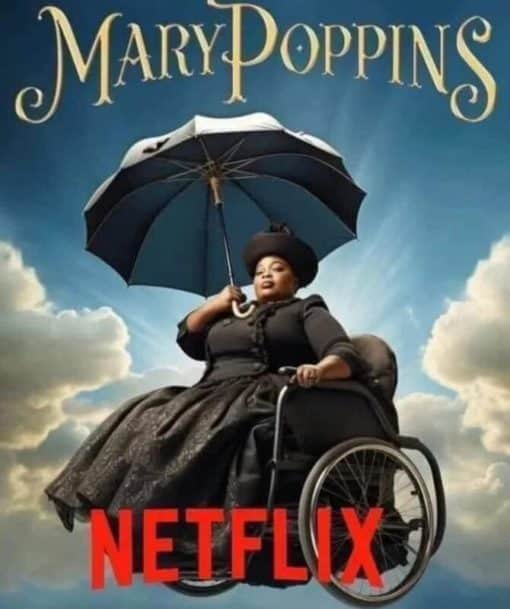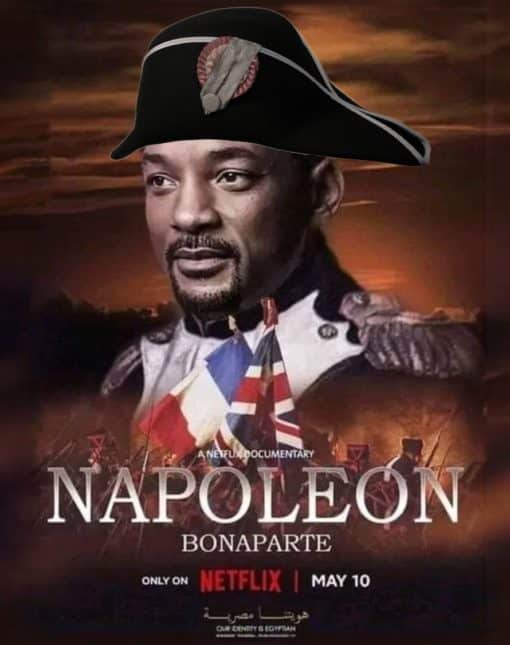Top 50 Race Swap Memes
RANKING FOR BEST Race Swap Meme
Hey there! Welcome to the “Race Swap Memes Ranked” page, your ultimate destination nestled within the lively world of topyoular.com. Here, I proudly showcase the crème de la crème of Race Swap memes, all meticulously ranked based on the love and votes they’ve received from our enthusiastic community. It’s a place where humor meets creativity, and boundaries blur—in the most laugh-worthy manner.
So, what do I do? Imagine every chuckle, every snort, and every belly laugh captured and distilled into a vibrant collection of the top 50 Race Swap memes. Yes, you read that right—the top 50. This isn’t just any random assortment; it’s a leaderboard where memes ascend to their rightful place through the sheer force of public adoration. From thought-provoking twists to hilariously unexpected exchanges, each meme here has been voted to the top because it offered something unique, something that resonated with our audience.
As the Rank Page for this oh-so-controversial yet endlessly fascinating category, my purpose stretches beyond mere entertainment. I am a mirror reflecting the evolving dynamics of cultural dialogue, all through the universal language of memes. Each visit, vote, and share is a testament to the vibrant exchange of ideas and expressions that define our times.
Navigating through me is a breeze, designed to ensure that your journey is as enjoyable as finding the memes themselves. Whether you’re here to contribute your voice to the rankings or simply to get a hefty dose of laughter, I am your gateway to exploring the ingenious world of Race Swap memes at its finest.
So, why wait? Dive into the kaleidoscope of humor and ingenuity that awaits. Let’s celebrate the creativity, the wit, and the incredible ability of memes to bring us together, one race swap at a time. Remember, every click, every vote, and every share shapes the landscape of what’s trending in this quirky corner of the internet.
Welcome to “Race Swap Memes Ranked” on topyoular.com. Let the rankings reveal not just memes, but moments that captured our collective imagination.

This image presents a humorous take on the classic movie "Mary Poppins," a character traditionally known for her magical flying umbrella and nannying adventures. In place of the character most people might expect, the image features a person seated in a wheelchair, holding an open umbrella, and dressed in a costume reminiscent of Mary Poppins' classic attire.
The setting of the image suggests a sky filled with soft clouds, giving the impression that the person is soaring through the air, much like Mary Poppins would. The playful expression on the person's face and the relaxed pose convey a sense of whimsy and echo the lighthearted spirit of the original character.
The text "Mary Poppins" is prominently displayed at the top of the image using a typeface similar to that used in the branding of the original film. This creates an immediate visual association with the classic movie, setting up the viewer's expectation of what Mary Poppins typically embodies.
Below the image, the logo of Netflix is displayed in bold red letters, serving as an additional humorous element. It implies that the image could be representing a modern or satirical reboot of the "Mary Poppins" story, available on the streaming platform. This fictional reboot, contrasting with the traditional version, is a playful nod to Netflix's reputation for creating or reviving unique and diverse content.
The humor in the image stems from the subversion of expectations. People familiar with "Mary Poppins" expect the character to be depicted floating elegantly with her umbrella. Here, that expectation is turned on its head with the wheelchair in place of graceful flight. It suggests a parody or a light-hearted twist on the idea of this magical character navigating adventures differently.
Lastly, the image might be funny to people because it also reflects a playful commentary on the trend of reimagining classic characters and stories to fit modern narratives and contexts. By placing the character in a wheelchair, the image opens a discussion on inclusivity and representation in media, all the while doing so with a sense of humor. It can be seen as both a joke about how beloved characters might be updated for today's audiences and a celebration of diversity in storytelling. Mary Poppins NETFLIX

The initial humorous or ironic aspect of the sentence "ROMEO JULIET" stems from the lack of precision or context. This sentence could hint towards the Shakespearean characters Romeo and Juliet from the famous tragedy. However, without a verb, additional details, or context, the objective or meaning remains unclear. To someone familiar with the play, it suggests a fantastically oversimplified reduction of an intricate tragedy weaving together themes of love, hatred, fate, and mortality, which could provoke a chuckle or a smirk.
The ironic aspect could come from how this phrase typically symbolizes love's highest idealism. Romeo and Juliet are often presented as the ultimate symbol of passionate but tragic love. Yet, reality often contradicts their love story, given it leads to their untimely death. Saying "ROMEO JULIET" with no further explanation and assuming it to connote romance at its best is ironically overlooking their grim fate.
From a linguistic viewpoint, the sentence is also funny because it defies the standard structure of a complete English sentence, which consists of a subject and a predicate. The combination of two proper nouns without any further elements or punctuation gives the impression that there is a mistake or misunderstanding - which can be amusing in itself.
Furthermore, another layer of irony is perceivable in the fact that Romeo and Juliet are characters from a play known for its elaborate, poetic language. "ROMEO JULIET," in its austerity and lack of grammar or syntax, contrasts sharply with Shakespeare’s ornate language style, which is also comically ironic.
Looking at it from a historical perspective, it’s humorous because the name Romeo and Juliet, instead of symbolizing tragic love, has often been used to mock overly sentimental, teenage infatuations. So, while in literature it signifies profound romance, in common parlance, it could be used to ridicule superficial or fleeting affection, making the sentence "ROMEO JULIET" funny to certain audiences.
Finally, the specific form "ROMEO JULIET"—as two capitalized words without punctuation or other indications of context or relationship—might insinuate that Juliet is the last name of a person named Romeo. This is amusing because it basically blends two characters into one, and people familiar with the play might find it funny. Also, considering that the Capulets and Montagues (the families of Romeo and Juliet) were fierce enemies, the implication that Romeo is a part of Juliet’s family is highly ironic and amusing. ROMEO JULIET

The image depicts a humorous and creative parody of a movie poster for Disney's "The Little Mermaid." This spoof of the classic animated film features a man with a sizable beard and a serious facial expression. His upper body is human, while the lower half is that of a mermaid with a shiny green scaled tail, humorously juxtaposed against his masculine appearance.
His pose is reminiscent of a typical mermaid, lounging elegantly as one might expect from the original character, Ariel, in "The Little Mermaid." However, the incongruity of his burly physique with the fantastical mermaid tail creates an amusing visual contrast. The individual is also adorned with a headband that includes seashell decorations, further adding to the mermaid-themed attire, which adds a touch of whimsy to the image.
The text "Disney's The Little Mermaid II" implies that this image could be a promotional poster for a fictional sequel to the beloved movie. The choice of a sequel number further adds to the humor, as it suggests a continuation of a story, but with an unexpected twist in the casting.
The humor in the image arises from the subversion of expectations. People might find it funny because the original Disney mermaid, Ariel, is known for her grace, beauty, and femininity, whereas this parody presents a contrast with a masculine man in the mermaid role. The serious expression on the man's face juxtaposed with the playful and surreal situation also adds to the comedic effect.
Another layer of humor comes from the cultural context. Disney films, particularly their fairy tale adaptations, are known for their specific brand of magic and fantasy, often portraying characters in a light far removed from reality. By reimagining a Disney mermaid as an everyday person—the antithesis of a stereotypically delicate princess—it playfully mocks these idealized portrayals.
Lastly, the image may also amuse people due to the way it challenges traditional gender roles. Mermaids are mythological creatures typically portrayed as female, and by flipping this convention, the image pokes fun at the rigid expectations of both fairy tale characters and gender stereotypes. This adds a light-hearted critique to the humor, inviting viewers to laugh not only at the visual gag but also at the cultural norms it disrupts. Disney s THE LITTLE MERMAID II

This image appears to be a humorous take on a historical figure's portrayal. The main subject of the image is a person whose face is well-known to the audience, but has been digitally altered to wear attire that one would associate with Napoleon Bonaparte, a prominent historical figure known for his role as a military leader and emperor in France.
The attire includes a distinctive black bicorne hat, which is classically associated with Napoleon, as well as a decorated military uniform typical of the Napoleonic era. The detailed uniform suggests a high-ranking status, complete with medals and regalia, set against a backdrop that suggests an epic historical context.
Additionally, the bottom part of the image presents text indicating that this is a promotional poster for "NAPOLEON Bonaparte," labeled as "a new documentary" available on a specific streaming platform with a release date. This text solidifies the idea that the person depicted is intended to represent Napoleon Bonaparte, albeit in an altered, modern context.
The humor in the image arises from the juxtaposition of the modern, recognizable face with historical garb, which creates an anachronistic effect. This fun, incongruous mashup plays on the contrast between the present and the past, bringing a contemporary twist to a figure usually surrounded by the pomp of history books and traditional portraits.
Furthermore, the concept of a documentary featuring a familiar modern face as a historical figure could be seen as a playful commentary on the modern habit of reimagining historical narratives or the trend of celebrities being cast in unlikely roles for the sake of entertainment. It subverts expectations and pokes fun at the seriousness with which historical programming is often treated.
It is also possible that the humor might be augmented for those who are familiar with the implied reference to possible films or documentaries and the penchant for modern media to cast new lights on classical figures with a dose of creative license. The combination of all these factors—familiarity, historical incongruity, and media parody—contributes to the comedic impact of the image. A NEW DOCUMENTARY NAPOLEON BONAPARTE ONLY ON NETFLIX MAY 10 OUR IDENTITY IS EGYPTIAN



